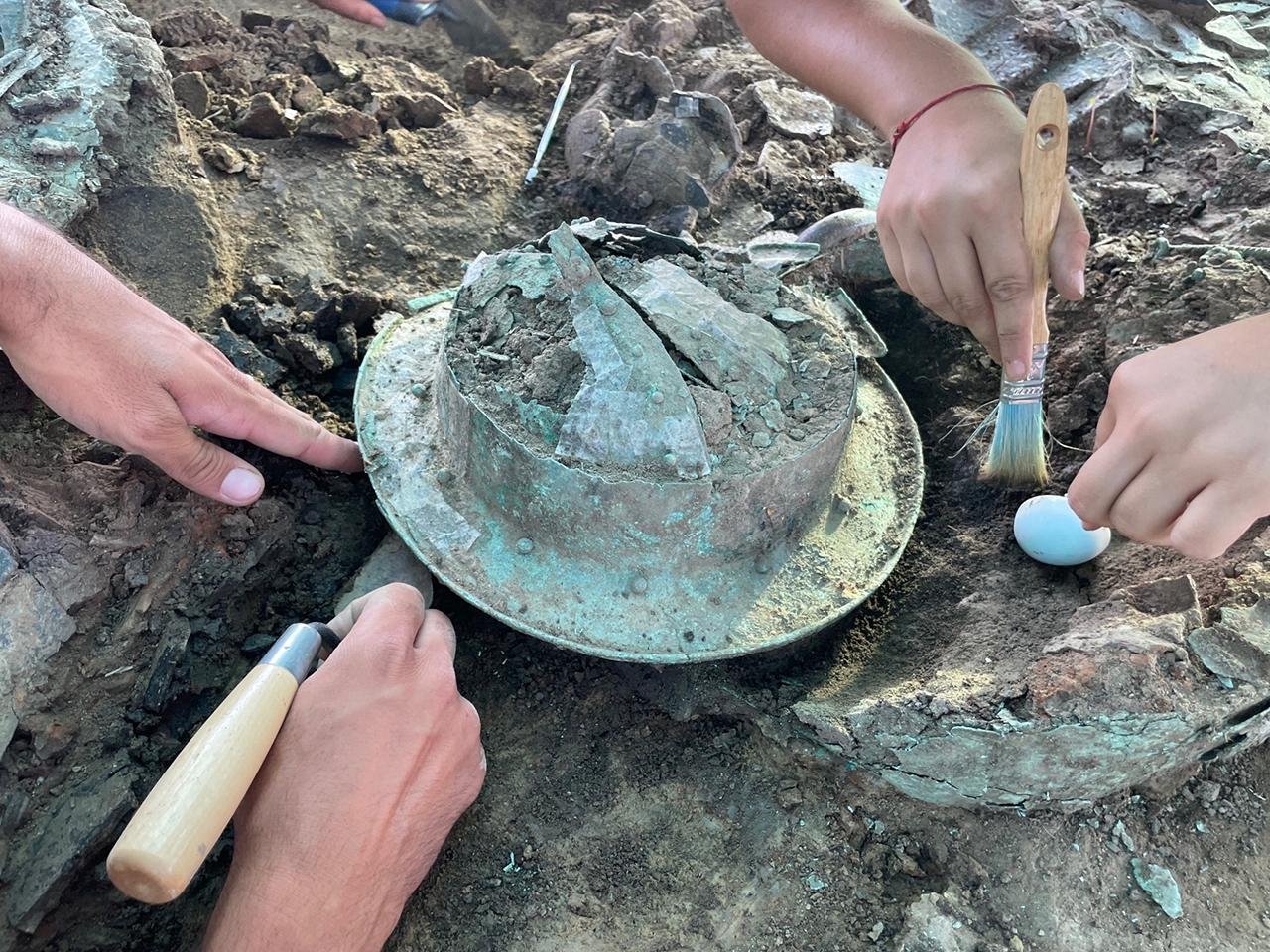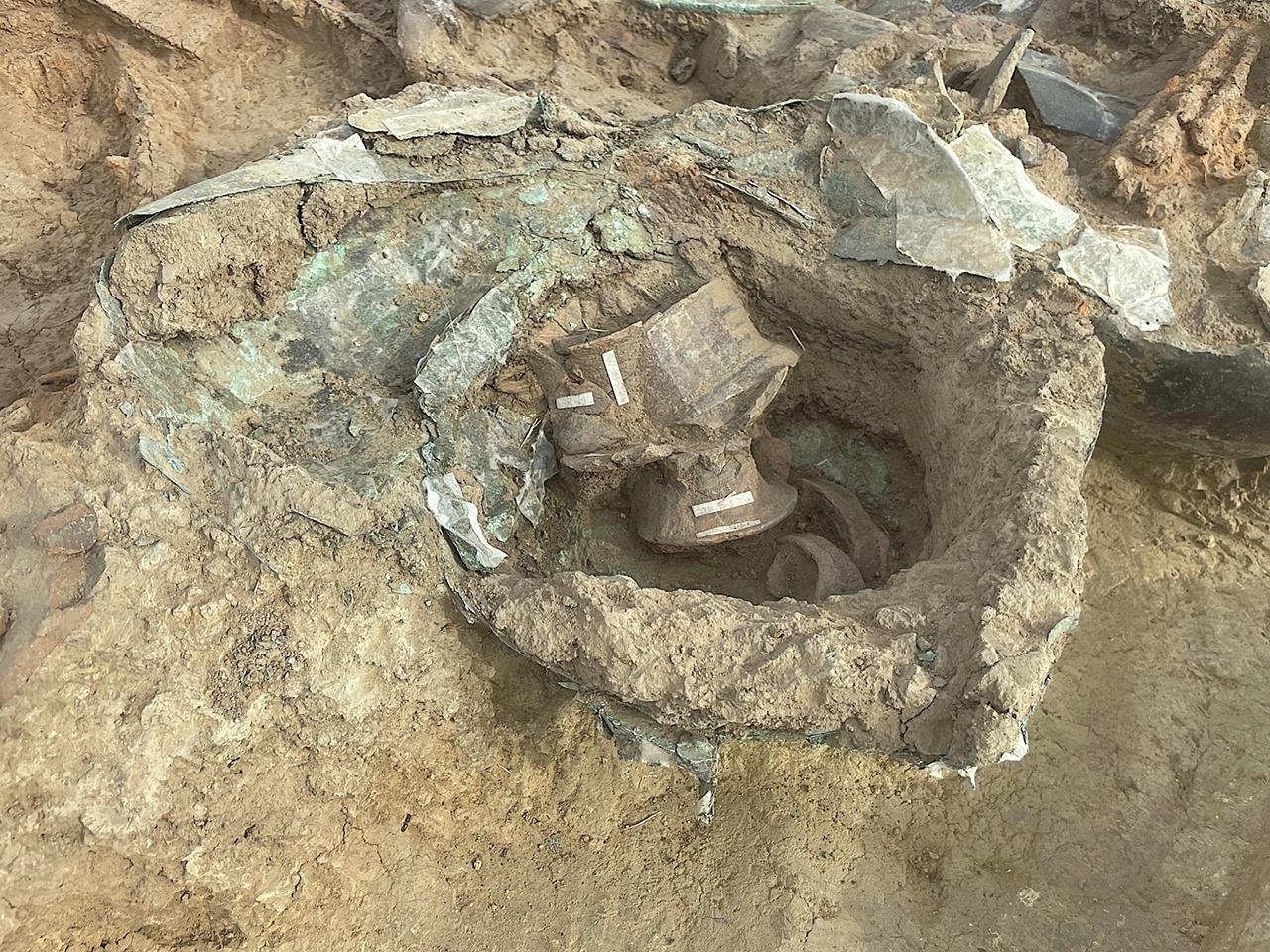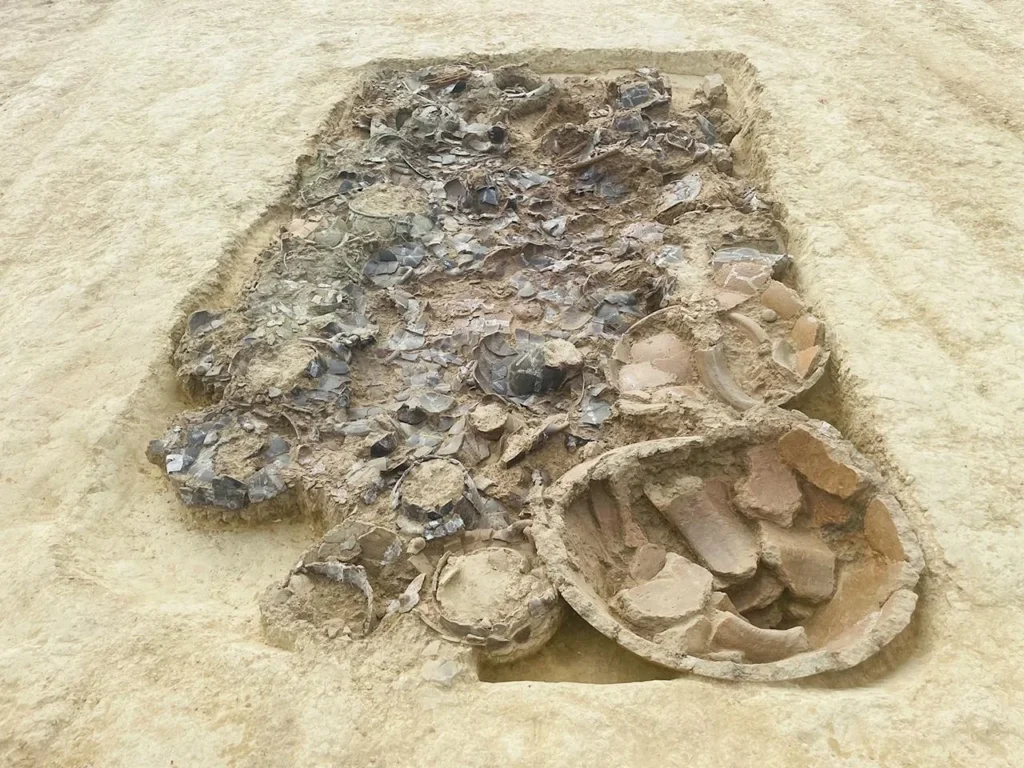The ancient world is full of untold stories, waiting to be unveiled through the tireless efforts of dedicated archaeologists. In the picturesque town of Corinaldo, nestled in the Ancona province of Italy, a remarkable discovery has recently come to light that sheds new light on the rich history and cultural heritage of the Picentes, an Italic people who thrived along the Adriatic coast centuries ago.
Archaeologists from the University of Bologna have unearthed a significant new princely tomb within the Corinaldo Necropolis, building upon the groundbreaking 2018 find of the “Prince of Corinaldo.” This latest excavation has uncovered a treasure trove of over 150 ornate artifacts, offering a glimpse into the opulent lifestyle and elite status of the tomb’s occupant.
Join us as we delve into the captivating story behind this remarkable discovery, exploring the insights it provides into the Picentes’ way of life, their connections with neighboring cultures, and the enduring legacy they have left behind.
The Corinaldo Necropolis: A Window into the Past
The Corinaldo Necropolis, located in the town of Nevola, has been the focus of extensive archaeological research under the ArcheoNevola Project since 2018. This collaborative effort, led by the University of Bologna’s Department of History, Culture, and Civilization, in partnership with the Municipality of Corinaldo and the Superintendent of Archaeology Fine Arts and Landscape for the provinces of Ancona and Pesaro Urbino, has yielded a treasure trove of discoveries that are rewriting the history of this region.

The latest excavation, spearheaded by Dr. Cecilia Carlorosi and Ilaria Venanzoni, has uncovered a quadrangular tomb situated at the center of a large circular pit, measuring approximately 3.8 by 2.2 meters. This tomb, dating back to the 7th century BCE, is associated with the Picentes, an ancient Italic people who flourished along the Adriatic coast from the 9th to the 3rd century BCE.
The Princely Tomb: A Reflection of Picentes’ Opulence
The tomb’s contents are nothing short of extraordinary, with over 150 artifacts that provide a glimpse into the opulent lifestyle of its occupant. Among the discovered items are a two-wheeled chariot, a bronze helm, cauldrons, and an array of finely decorated vessels. These artifacts suggest the presence of a funerary banquet, indicating that the tomb’s owner was a high-ranking individual of considerable importance within the Picentes’ social hierarchy.

The discovery of the chariot is particularly significant, as it is a symbol of power and status in ancient societies. The bronze helm, on the other hand, may have been worn by the tomb’s occupant, further reinforcing their elite status. The presence of cauldrons and decorated vessels, often used in ceremonial feasts and rituals, suggests that the deceased individual was likely a prominent figure within the Picentes’ community, perhaps a ruler or a respected leader.
Picentes: A People of Trade and Influence
The Picentes were a wealthy people with extensive trading relationships, as evidenced by the diverse array of artifacts found within the tomb. Among the discovered items are several Etruscan-origin artifacts, highlighting the Picentes’ connections with their neighboring cultures.
The Picentes’ territory, known as Picenum, stretched along the Adriatic coast, with the primary settlements located in Novilara in the north and Belmonte in the south. This strategic location allowed the Picentes to engage in thriving trade networks, exchanging goods and ideas with various communities, including the Etruscans to the west.
The artifacts found in the tomb, such as the skewers, iron ax, and pottery items used for serving food and drinks, provide insight into the daily routines, habits, and culinary practices of the Picentes. These findings not only showcase the aristocratic lifestyle of the tomb’s occupant but also shed light on the broader cultural and social dynamics of the Picentes’ society.
Preserving and Sharing the Corinaldo Necropolis’ Legacy
The recent discoveries at the Corinaldo Necropolis have ignited a renewed sense of pride and excitement within the local community. Mayor Gianni Aloisi of Corinaldo has expressed the town’s newfound title as the “land of the princes,” acknowledging the historical and cultural significance of the Nevola archaeological area.
Once the artifacts are consolidated and restored, they will be displayed in a museum area accessible to the public. This initiative not only preserves the legacy of the Picentes but also provides an opportunity for visitors to engage with and learn about this fascinating chapter of Italian history.
The presentation of these findings to the public, coupled with guided visits to the excavation site, will further emphasize the educational and historical value of the Corinaldo Necropolis. This effort aims to foster a deeper appreciation for the rich cultural heritage of the region and inspire future generations to uncover the untold stories that lie buried within the earth.
Conclusion
The recent discovery of the princely tomb in the Corinaldo Necropolis is a testament to the enduring power of archaeology to uncover the hidden narratives of the past. This remarkable find has shed new light on the opulent lifestyle and elite status of the Picentes, a people whose influence and trading relationships extended far beyond their Adriatic coastal homeland.
As the artifacts are conserved and displayed for public viewing, the Corinaldo Necropolis will continue to captivate and educate visitors, inviting them to step back in time and immerse themselves in the rich cultural tapestry of the Picentes. This discovery serves as a reminder that the ancient world still holds countless mysteries waiting to be unveiled, and that the tireless work of dedicated archaeologists is essential in preserving and sharing the stories of our shared human past.

